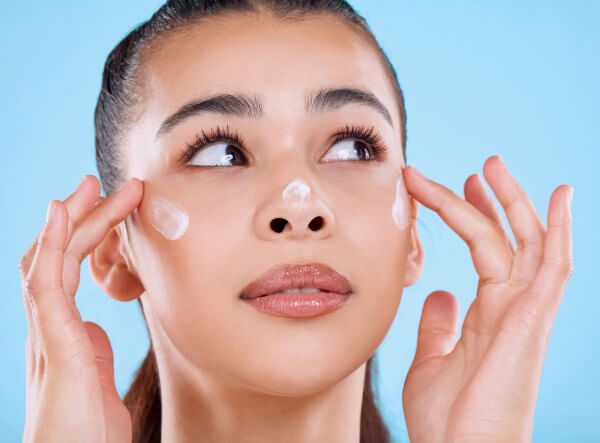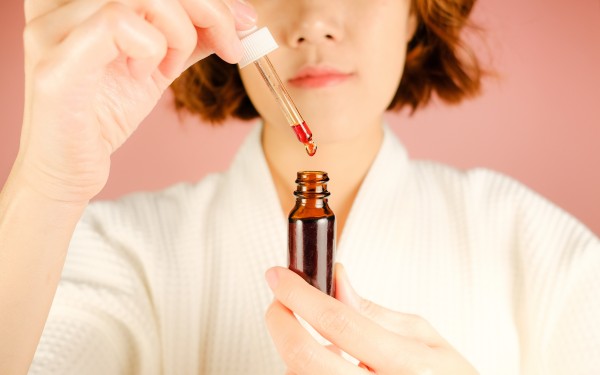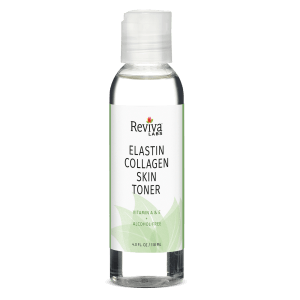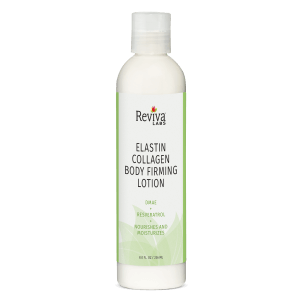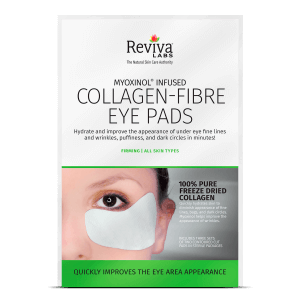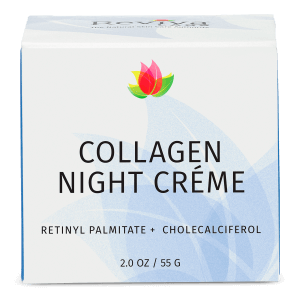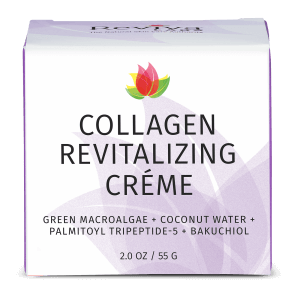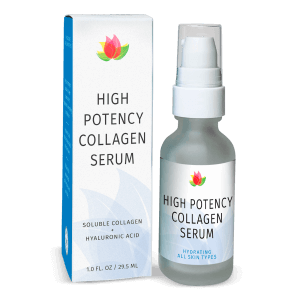Clean Beauty, Natural, Reviva Labs, Skin Care
What is Collagen Banking?
When it comes to skin health, collagen is one of the most important components of our skin. It’s the structural protein that keeps our skin firm, smooth, and resilient. But here’s the catch: collagen doesn’t stick around forever. As early as our twenties, natural collagen production begins to slow down. By the time we reach our forties, collagen levels may drop by as much as 1% each year. So, how can we maintain youthful-looking skin for longer? Enter collagen banking.
Collagen banking is a proactive approach to preserving and stimulating collagen in your skin. It’s about building up reserves now to keep skin healthy and vibrant later. Let’s explore what collagen banking really means and how topical products designed for this purpose work their magic.
How does Collagen Banking Work?
Think of collagen banking as saving for your skin’s future. Just as you’d deposit money into a savings account to prepare for retirement, collagen banking involves taking steps to maintain and enhance your skin’s collagen levels before they start to dwindle. The idea is simple: the more collagen your skin has now, the better equipped it will be to handle the natural aging process.
Unlike short-term fixes, collagen banking is about the long game. It involves adopting habits and products that protect existing collagen while promoting new collagen production. From using sunscreen daily to applying targeted skincare treatments, these efforts work together to slow the loss of collagen and maintain skin elasticity.
Why Is Collagen So Important for Skin?
Collagen is the most abundant protein in the skin. It’s found in the dermis, the middle layer of skin, where it provides our skin with structure, strength, and elasticity. Collagen fibers act like scaffolding, keeping skin firm and plump. When collagen levels are high, skin looks smooth and youthful. When they decline, skin starts to lose volume and develop fine lines and wrinkles.
While collagen production is robust during our youth, it’s highly vulnerable to factors like UV radiation, pollution, and lifestyle choices. Smoking, for instance, significantly accelerates collagen breakdown. Studies show that excessive sun exposure can degrade collagen fibers and lead to visible photo-aging. That’s why protecting and replenishing collagen is critical.
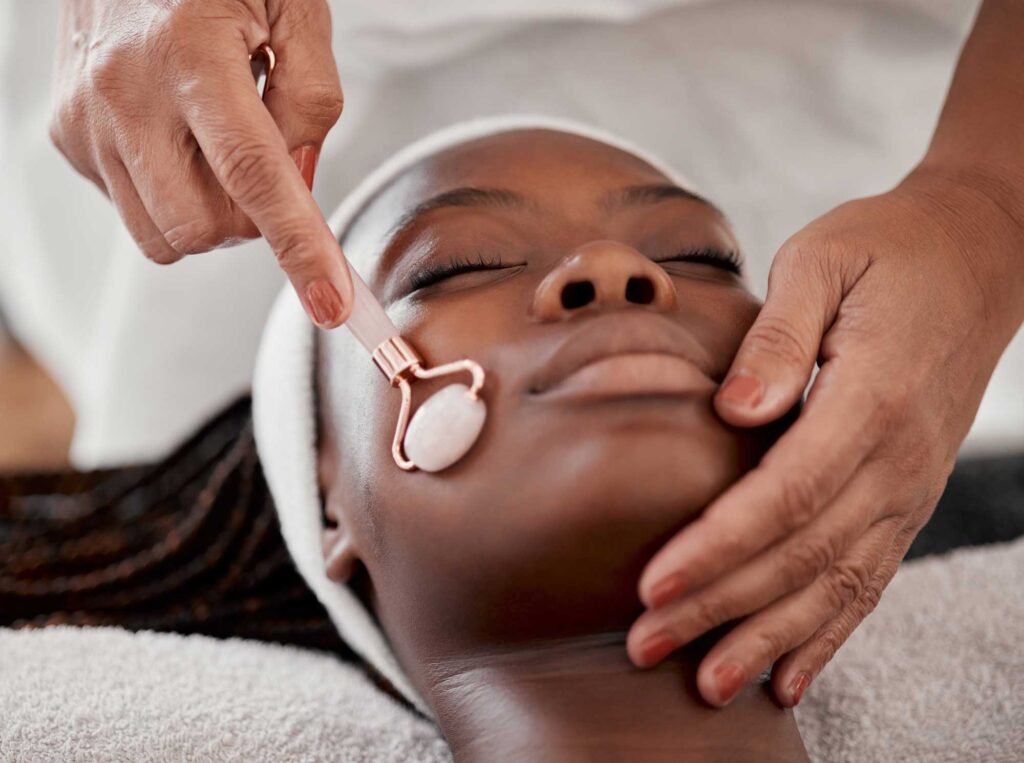
How Do Collagen Banking Products Work?
Topical skincare products designed for collagen banking are formulated to tackle two key challenges: preventing collagen degradation and stimulating collagen synthesis. These products often combine antioxidants, peptides, and hydrating ingredients to create a multi-faceted approach. Here’s how they work:
Protecting Collagen from Damage
Free radicals, generated by UV rays and pollution, are one of collagen’s biggest enemies. They break down collagen fibers and impair the skin’s ability to produce new ones. This is where antioxidants come in. Ingredients like vitamin C, vitamin E, and green tea extract neutralize free radicals before they can cause harm.
In addition to antioxidants, sunscreen is a must. Broad-spectrum SPF products shield the skin from UV radiation, the number one cause of premature collagen loss. Incorporating daily sun protection into your routine is one of the simplest yet most effective ways to preserve your skin’s collagen reserves.
Boosting Collagen Production
Collagen-building products often feature peptides, which are short chains of amino acids that serve as building blocks for proteins like collagen. Peptides send signals to the skin, encouraging it to produce more collagen naturally. Another powerhouse ingredient is retinoids, derivatives of Vitamin A that stimulate collagen synthesis and improve skin texture over time.
Hydroxy acids, such as glycolic acid and lactic acid, are also common in collagen banking products. These ingredients exfoliate the skin’s surface, promoting cell turnover and revealing fresher, healthier skin beneath. By doing so, they create an optimal environment for collagen production.
Key Ingredients to Look For
If you’re ready to start collagen banking, here are some key ingredients to include in your skincare routine:
- Vitamin C: A potent antioxidant that supports collagen production and brightens skin.
- Peptides: Signal skin to produce collagen and improve elasticity.
- Retinoids: Increase collagen synthesis and reduce the appearance of fine lines.
- Hyaluronic Acid: Hydrates and plumps skin, creating a smooth surface.
- Niacinamide: Strengthens the skin barrier and protects collagen from environmental damage.
Techniques and Treatments for Collagen Banking
In addition to topical products, certain techniques and treatments can significantly enhance collagen banking efforts. Here are some effective options:
Microneedling
Microneedling involves using fine needles to create micro-injuries in the skin, triggering the body’s natural healing process. This process stimulates collagen and elastin production, resulting in firmer, smoother skin over time. Many dermatologists recommend microneedling as a powerful tool for collagen banking.
Laser Treatments
Fractional laser treatments, such as CO2 or erbium lasers, target the dermis to stimulate collagen remodeling. These treatments are highly effective at improving skin texture and elasticity, making them a great option for those serious about collagen banking.
Ultrasound Therapy
Ultrasound-based treatments, like Ultherapy, deliver energy deep into the skin to stimulate collagen production. These non-invasive procedures are popular for tightening and lifting skin without the need for surgery.
Facial Massages
Facial massages, either with your hands or using tools like jade rollers and gua sha stones, improve circulation and promote lymphatic drainage. While not as intensive as clinical treatments, regular massages can help support healthy skin and collagen levels over time.
LED Light Therapy
Red light therapy is a non-invasive option that uses low-level light to penetrate the skin and boost collagen production. It’s gentle enough for home use with LED devices and can complement other collagen banking methods.

The Role of Lifestyle in Collagen Banking
While skincare products and treatments play a vital role, your lifestyle choices can make or break your collagen reserves. A balanced diet rich in antioxidants, such as berries, leafy greens, and nuts, provides your body with the nutrients it needs to produce collagen. Staying hydrated and getting enough sleep also help maintain healthy skin.
Avoiding smoking and limiting alcohol consumption are equally important. Both habits can dehydrate skin and accelerate collagen breakdown. Consistent exercise, on the other hand, promotes circulation and delivers oxygen and nutrients to skin cells, supporting collagen health.
When Should You Start Collagen Banking?
It’s never too early to start collagen banking. Many dermatologists recommend beginning in your twenties, when collagen production first starts to decline. The earlier you adopt collagen-preserving habits and products, the more significant the benefits will be over time. That said, it’s also never too late. Even if you’ve already noticed signs of aging, collagen banking can help slow further loss and improve skin’s appearance.
Collagen banking isn’t just a trend; it’s a smart, science-backed strategy for maintaining youthful skin. By incorporating collagen-supporting products, advanced treatments, and healthy lifestyle choices into your routine, you can build a strong foundation for your skin’s future.

